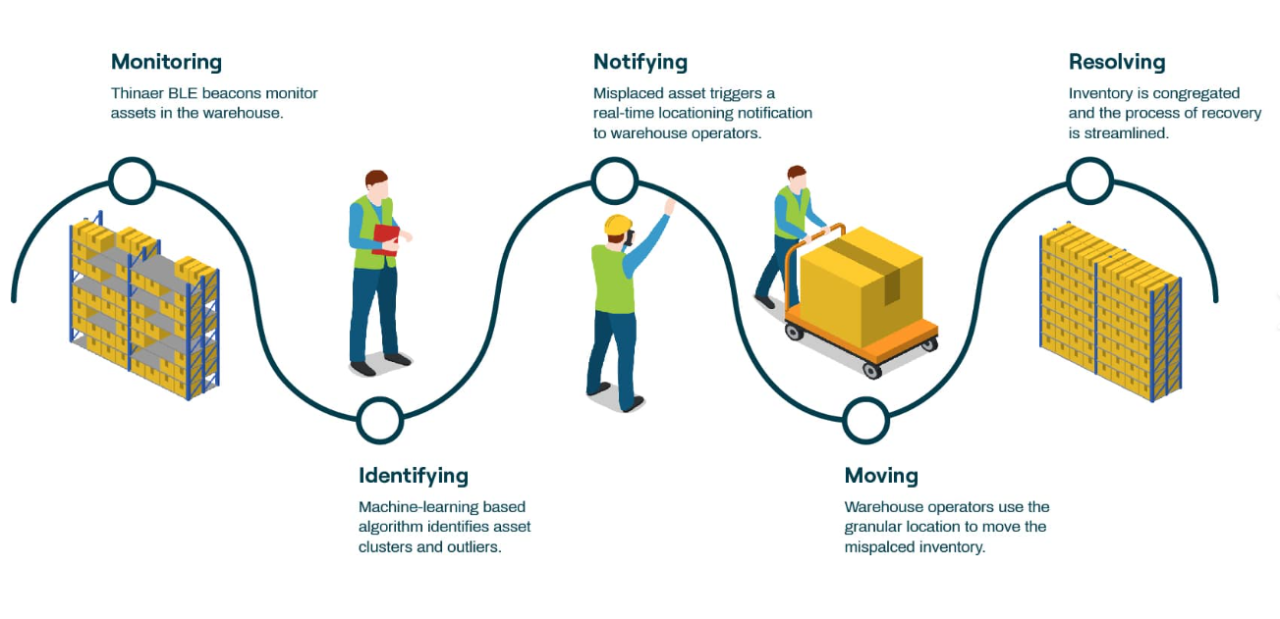Streamline Operations with Smart Inventory Management
In today’s fast-paced business world, efficiency is key to staying ahead of the competition. One way to maximize efficiency in your supply chain is through smart inventory management. By streamlining your operations and optimizing your inventory, you can reduce costs, increase productivity, and ultimately improve your bottom line.
Smart inventory management involves carefully monitoring and controlling the flow of goods in and out of your warehouse. By keeping a close eye on your inventory levels, you can avoid stockouts, reduce excess inventory, and ensure that you always have the right amount of product on hand. This not only helps to eliminate waste but also improves your overall supply chain performance.
One of the key benefits of smart inventory management is improved forecasting accuracy. By using advanced analytics and data-driven insights, you can better predict customer demand and plan your inventory levels accordingly. This allows you to avoid overstocking or understocking, reducing the risk of lost sales and improving customer satisfaction.
Another advantage of smart inventory management is increased visibility and transparency throughout your supply chain. By implementing a centralized inventory management system, you can track the movement of goods in real-time, allowing you to quickly identify any bottlenecks or inefficiencies in your operations. This level of visibility not only helps to streamline your processes but also enables you to make more informed decisions about your inventory strategy.

Image Source: licdn.com
In addition to improving efficiency, smart inventory management can also help to reduce costs. By optimizing your inventory levels and minimizing excess stock, you can lower carrying costs and reduce the risk of obsolescence. This allows you to free up valuable resources and invest them back into your business, driving growth and innovation.
Furthermore, smart inventory management can also enhance your relationships with suppliers and customers. By having a clear understanding of your inventory needs and requirements, you can negotiate better terms with your suppliers and improve your overall supply chain collaboration. This can lead to faster lead times, lower costs, and ultimately a more competitive advantage in the market.
Overall, streamlining operations with smart inventory management is essential for maximizing efficiency in your supply chain. By carefully monitoring and controlling your inventory levels, you can reduce costs, improve forecasting accuracy, increase visibility, and enhance your relationships with suppliers and customers. With the right tools and strategies in place, you can optimize your inventory management practices and drive success for your business.
Unleash Your Supply Chain’s Potential for Success
In today’s fast-paced and competitive business environment, it is more important than ever for companies to maximize efficiency in all aspects of their operations. One key area where this can be achieved is through effective inventory management. By properly managing your inventory, you can streamline operations, reduce costs, and ultimately increase your bottom line.
Effective inventory management is essential for businesses of all sizes, from small startups to large corporations. By keeping track of your inventory levels and ensuring that you have the right amount of stock on hand at all times, you can avoid stockouts, minimize excess inventory, and prevent unnecessary costs. This not only helps to improve customer satisfaction by ensuring that products are always available when needed but also helps to increase profitability by reducing storage and carrying costs.
One of the key benefits of optimizing your supply chain with inventory management is the ability to improve forecasting accuracy. By analyzing historical sales data and trends, you can better predict future demand and adjust your inventory levels accordingly. This can help you to avoid overstocking on slow-moving items and understocking on popular products, ultimately leading to increased sales and improved customer satisfaction.
Another important aspect of efficient inventory management is the ability to reduce lead times and improve order fulfillment. By having the right amount of stock on hand at all times, you can minimize the time it takes to fulfill customer orders and reduce the risk of backorders. This can help to improve customer loyalty and retention, as well as reduce the risk of lost sales due to stockouts.
Additionally, by optimizing your supply chain with inventory management, you can reduce the risk of obsolescence and spoilage. By regularly monitoring your inventory levels and rotating stock as needed, you can ensure that products are sold before they expire or become outdated. This can help to reduce waste and improve overall profitability.
Furthermore, effective inventory management can also help to improve cash flow and working capital management. By reducing excess inventory and carrying costs, you can free up valuable capital that can be reinvested into other areas of your business. This can help to fuel growth and expansion, as well as improve overall financial performance.
In conclusion, maximizing efficiency in your supply chain with inventory management is essential for achieving success in today’s competitive business environment. By properly managing your inventory levels, you can streamline operations, reduce costs, and ultimately increase your bottom line. By analyzing historical sales data, improving forecasting accuracy, reducing lead times, and minimizing the risk of obsolescence, you can optimize your supply chain and unlock its full potential for success. So, take the time to evaluate your current inventory management practices and make the necessary changes to unleash your supply chain’s potential for success.
How to Optimize Your Supply Chain with Inventory Management